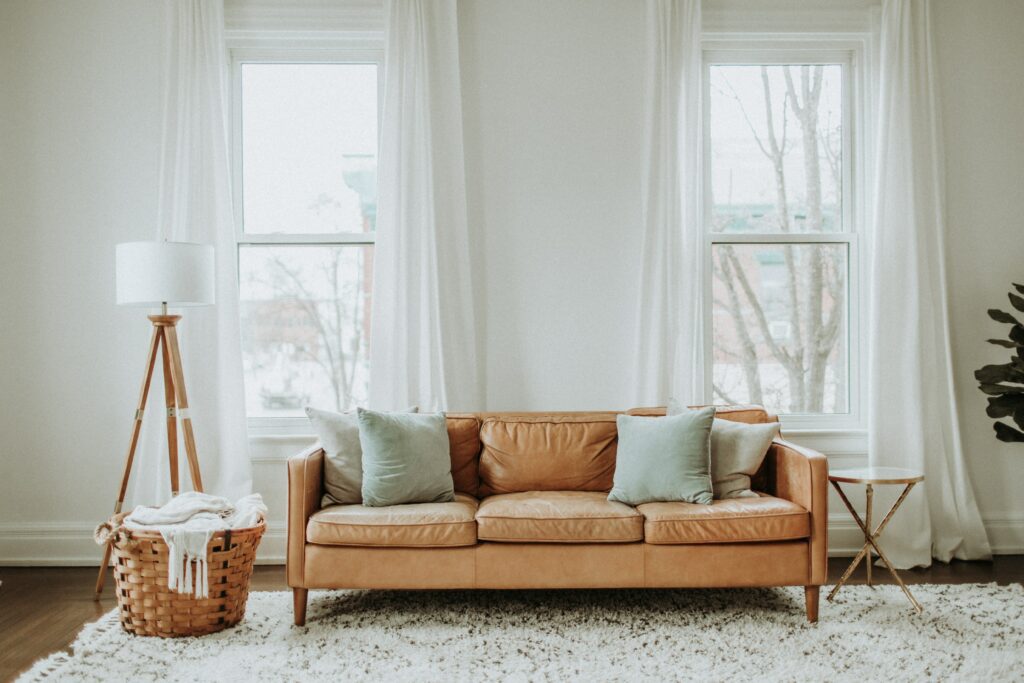Renovating your home is an exciting project, but it can also be a stressful one. Not only do you have to worry about staying within budget and making sure the renovations are done correctly, but you also need to protect your furniture from any dust or debris that might arise during the process. Fortunately, there are some easy steps you can take to ensure that all of your furniture remains safe throughout the renovation process. In this article, we will discuss how to properly prepare and store your furniture while renovating. We’ll cover everything from choosing appropriate storage containers for each piece of furniture to creating a designated “safe zone” inside your home for items that cannot be moved outside. By following these simple tips, you can rest assured knowing that all of your precious pieces will remain in perfect condition until the renovations are complete!
Choosing the Right Storage Containers for Your Furniture
When storing furniture during a home renovation, it’s important to have the right containers for the job. Plastic bins with lids are ideal for many items such as small tables, chairs, and bookcases. For heavier items such as sofas and armoires, wooden boxes or crates are a better choice. These containers should be clean, sturdy, and large enough to fit the item being stored. If possible, use larger bins or boxes than needed so you can add extra padding in the form of blankets, towels, or bubble wrap to protect your furniture from scratches or dents during the move.
Moreover, make sure to label each container with the contents inside. This will help you quickly find the piece of furniture when it’s needed without having to open each box and search through them one by one. If you are in a hurry, you can also add a photo of the item to the container for easy identification.
Take Advantage of Container Storage Companies

If you don’t have enough space inside your home to store furniture while renovations are underway, consider using a container storage company. These services provide secure containers that can be delivered to your home, filled with furniture, and then stored in their warehouse until the renovation is complete. This allows you to free up much-needed space without having to move items out of the house. Namely, whether you are looking for container storage service in Hull, or you prefer container storage in Leeds, there are plenty of companies to choose from. Knowing that your furniture is in safe hands can be a huge relief during this busy and stressful time.
Creating a Safe Zone for Your Furniture
Once you have selected the right storage containers for your furniture, it is time to create a safe zone inside your home. This safe zone should be an area that is far away from any dust or debris created by the renovations. Ideally, this space should be closed off with plastic sheeting and clearly marked as a no-go zone for anyone participating in the renovations. If it is not possible to create a safe zone, look for furniture that can be easily moved outside. This could include items such as outdoor seating, garden furniture, or patio umbrellas. These pieces of furniture should then be stored in an area away from any dust or debris created by the renovations.
Properly Attaching Labels to Your Furniture
When storing furniture during a home renovation, proper labeling is essential. This ensures that you can quickly and easily locate the items when it’s time for them to be moved back into your home. Clearly write the name of each item on its storage container or box, as well as which room it belongs in so there is no confusion when moving them back inside. Additionally, if you are using a container storage service, make sure to ask for an itemized list of all the pieces in your shipment so that everything can be easily accounted for.
Covering Your Furniture to Protect Against Dust and Debris

Thick pieces of fabric can go a long way in preventing dust and debris from settling on your furniture. Make sure that the covers fit snugly around the piece so nothing can get in underneath. If possible, use plastic sheeting around the entire furniture piece to create an even better seal. Namely, using plastic sheeting can help protect against any water damage that could occur during the renovation. If you are painting the walls inside your home, it is also a good idea to cover furniture with plastic sheeting to ensure that no paint drips onto them. Sometimes, even the most careful painters can accidentally splatter paint on furniture that is in the vicinity.
Stacking Furniture to Maximize Space
If you are limited in space while storing your furniture, consider stacking items. This is especially useful for smaller pieces that are easy to maneuver such as side tables or end tables. Place heavier pieces on the bottom of the stack and lighter ones at the top. Make sure that you use thick blankets between each layer so that nothing gets scratched or dented. When stacking furniture, it is also important to ensure that the pieces are secure so they don’t topple over. Use padding between each layer and tie them together with twine or rope.
Temporary Disassembling of Furniture for Extra Storage Space
Finally, if you are in need of extra storage space, consider temporarily disassembling your furniture. This can help free up much-needed space and make it easier to move items around during the renovation process. However, be sure to keep all the hardware and pieces with the furniture so that they can easily be reassembled once the renovations are complete. Additionally, it is a good idea to number each piece so that you know which parts go where when it is time to put it back together again.
It is important to take the necessary precautions when storing your furniture during a home renovation. By following these tips, you can ensure that all of your precious pieces remain safe and secure until the renovations are complete. Whether you choose to use plastic bins with lids, wooden crates or boxes, container storage companies or create a safe zone inside your home – make sure to keep labels on each item for easy identification and cover them up with thick fabric or plastic sheeting for extra protection against dust and debris. With careful planning and thoughtful execution of these steps, your furniture will stay intact throughout the entire process!


